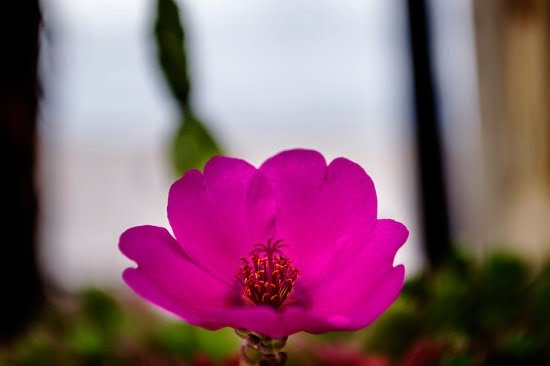Are you looking to create a more eco-friendly and sustainable garden? In this article, we’ll explore 15 sustainable gardening ideas yardyum that will not only benefit the environment but also help you create a beautiful and thriving garden space. From water conservation and composting to organic pest control and utilizing native plants, there are plenty of sustainable practices that can be implemented in your own yard.
Sustainable gardening is an approach to gardening that focuses on reducing the negative impact on the environment while creating a healthy and productive garden. By implementing sustainable gardening practices, you can conserve natural resources, reduce waste, and support local ecosystem health. From utilizing rain barrels for water conservation to choosing native plants for low maintenance landscaping, there are many ways to make your garden more sustainable.
In the following sections, we’ll delve into specific sustainable gardening practices that you can easily incorporate into your own garden. From composting food scraps to creating habitats for beneficial insects, there are plenty of options for those looking to create a more environmentally-conscious garden space. Whether you’re an experienced gardener or just starting out, these ideas will inspire you to make your yard more eco-friendly and sustainable.
Utilizing Rain Barrels for Water Conservation in Your Garden
Rain barrels are an essential tool for water conservation in sustainable gardening. By collecting rainwater, gardeners can reduce their reliance on municipal water supplies and lower their water bills. Additionally, using rain barrels helps to prevent stormwater runoff, which can contribute to pollution in local waterways. Here are some tips for utilizing rain barrels effectively in your garden.
Installing and Maintaining Rain Barrels
When setting up rain barrels, it’s important to place them beneath a downspout to catch the maximum amount of rainwater. Ensure that the barrel has a secure lid to prevent mosquito breeding and evaporation. Regularly check for any leaks or damage, and clean out debris that may accumulate in the barrel. Positioning the barrel on a stand or bricks will make it easier to access the spigot at the bottom.
Using Rain Barrel Water in the Garden
The collected rainwater can be used for various watering needs in the garden, such as watering plants, flowers, and vegetable beds. Since rainwater is free of chlorine and other chemicals found in tap water, it is beneficial for promoting healthy growth in plants. Remember to use a fine mesh screen when filling watering cans from the barrel to filter out any sediment or debris.
Maximizing Rain Barrel Benefits
In addition to conserving water and reducing utility costs, utilizing rain barrels contributes to sustainable gardening by lessening the strain on local water sources during dry periods. By incorporating multiple rain barrels into your garden setup, you can increase your water storage capacity for times of high demand. This ensures that you have an ample supply of natural water resources available for maintaining a thriving garden ecosystem.
Composting
How to Start Composting
To start composting, designate an area in your yard for a compost pile or purchase a compost bin. Collect food scraps such as fruit and vegetable peels, coffee grounds, eggshells, and yard waste like grass clippings and leaves. Layer these materials in your compost pile, making sure to include a mix of “green” materials (like food scraps) and “brown” materials (like yard waste). Turn the compost regularly to aerate it and speed up the decomposition process.
The Benefits of Composting
Composting not only reduces the amount of organic waste that ends up in landfills but also produces nutrient-rich soil that can be used to enhance the health of your garden. By using this natural fertilizer, you can improve the overall structure and health of your soil while reducing the need for chemical fertilizers that are harmful to the environment.
Utilizing Compost in Your Garden
Once your compost is ready, use it as a top dressing for flower beds or mix it into the soil when planting new vegetables or flowers. The nutrient-rich compost will provide essential elements for plant growth, increase soil fertility, and promote healthy root development.
By incorporating compost into your gardening routine, you are helping to create a more sustainable and eco-friendly landscape. Incorporating these 15 sustainable gardening ideas Yardyum can make a significant difference in nurturing a healthy garden while minimizing environmental impact.
Companion Planting
When it comes to sustainable gardening, companion planting is a technique that can greatly benefit the health and yield of your plants. By strategically planting different species together, you can create a natural ecosystem that supports each other’s growth and overall well-being.
One of the key benefits of companion planting is pest control. For example, planting marigolds alongside tomatoes can help repel harmful pests that are attracted to the tomato plants. Additionally, certain plant combinations can help improve soil quality by fixing nitrogen or preventing soil erosion, contributing to long-term sustainability in your garden.
Another advantage of companion planting is maximizing space and resources. Certain plants have complementary root systems and canopy structures, allowing them to coexist without competing for sunlight, water, and nutrients. This efficient use of space and resources not only benefits the environment but also helps you achieve a higher yield from your garden.
In addition to practical benefits, companion planting can also make your garden more visually appealing. By carefully selecting combinations of plants with contrasting colors, textures, and heights, you can create a beautiful and diverse landscape that is both sustainable and aesthetically pleasing.
Incorporating companion planting into your gardening practices fosters a holistic approach to cultivating a thriving ecosystem within your own yard. With these 15 sustainable gardening ideas Yardyum keywords in mind, you can create a healthy environment for both the flora and fauna in your garden.
Organic Pest Control Methods for a Healthy Garden
When it comes to maintaining a healthy and thriving garden, pest control is a crucial aspect. However, using chemical pesticides can harm the environment and the beneficial insects in your yard. Instead, consider implementing organic pest control methods to keep your garden flourishing without causing harm to the ecosystem. Here are some sustainable gardening ideas Yardyum for controlling pests in your garden:
1. Use natural predators: Introduce beneficial insects like ladybugs, lacewings, and praying mantises to your garden to naturally keep pest populations in check.
2. Neem oil spray: Neem oil is an effective organic pesticide that can be used to control common garden pests such as aphids, spider mites, and whiteflies.
3. Companion planting: Planting certain herbs and flowers alongside your vegetables can help repel pests. For example, marigolds can deter nematodes, while basil can repel mosquitoes and tomato hornworms.
4. DIY insecticidal soap: Create a homemade insecticidal soap by mixing liquid castile soap with water to effectively control soft-bodied insects like aphids and mealybugs.
5. Organic barriers: Use physical barriers such as row covers or netting to protect plants from pest infestations without resorting to chemical treatments.
By incorporating these organic pest control methods into your gardening routine, you can maintain a healthy and sustainable garden while minimizing harm to the environment.
Creating a Habitat for Beneficial Insects and Pollinators
One way to attract beneficial insects and pollinators is by planting a diverse array of flowering plants. Be sure to include flowers that bloom at different times throughout the year to provide a continuous food source for these important creatures. Some popular choices include lavender, sunflowers, and coneflowers. These plants not only serve as a food source but also as shelter and nesting sites for many beneficial insects.
Another key aspect of creating a habitat for beneficial insects and pollinators is providing ample water sources. This can be achieved through the installation of a small pond or simply by incorporating shallow dishes filled with water in your garden. Additionally, adding elements such as rocks or logs can create resting spots for butterflies and other insects.
It’s important to avoid pesticide use in your garden, as many chemicals can harm beneficial insects and pollinators. Instead, focus on organic pest control methods and companion planting techniques to naturally manage pests while protecting these crucial members of your garden ecosystem.
| Beneficial Insects | Pollinator Plants |
|---|---|
| Ladybugs | Lavender |
| Bees | Sunflowers |
| Butterflies | Coneflowers |
DIY Upcycled Garden Projects for a Sustainable Yard
One of the best ways to practice sustainable gardening is by incorporating upcycled garden projects into your yard. Not only does this help reduce waste, but it also adds a unique and creative touch to your outdoor space. There are countless items that can be repurposed into functional and beautiful additions to your garden.
One popular upcycling project is turning old wooden pallets into vertical gardens. By adding some soil and a few plants, you can create a space-saving solution that adds visual interest to any blank wall or fence. Another idea is to repurpose old tires as colorful planters for flowers or herbs. This not only keeps the tires out of landfills but also creates a fun and vibrant addition to your yard.
For those with a creative streak, making garden art out of recycled materials can be a fulfilling endeavor. Using old glass bottles, broken ceramics, or even discarded metal, you can create eye-catching sculptures or mosaics that add personality to your garden. These DIY upcycled projects not only benefit the environment but also allow you to express your individual style in your outdoor living space.
| Upcycled Garden Project | Benefits |
|---|---|
| Vertical pallet garden | Space-saving, reduces waste |
| Tire planters | Adds color, keeps tires out of landfills |
| Garden art from recycled materials | Expresses individual style, reduces waste |
Choosing and Using Native Plants for Low Maintenance and Eco-Friendly Landscaping
In conclusion, implementing sustainable gardening practices is not only beneficial for the environment but also for the health and productivity of your garden. By incorporating ideas such as utilizing rain barrels for water conservation, composting food scraps, companion planting, organic pest control methods, creating a habitat for beneficial insects and pollinators, and using native plants for landscaping, you can create a more eco-friendly and low maintenance yard.
Yardyum offers a plethora of resources and tips to help you achieve a sustainable garden that not only reduces your environmental impact but also enhances the beauty of your outdoor space. Whether you are just getting started or looking to expand your sustainable gardening strategies, Yardyum has something to offer everyone.
By embracing sustainable gardening ideas from Yardyum and other sources, you can play a vital role in preserving the planet while enjoying a lush and flourishing garden. With dedication and creativity, you can transform your yard into an environmentally friendly oasis that supports local wildlife and contributes to a healthier ecosystem. Start small by implementing one or two of these ideas and gradually incorporate more as you become more comfortable with sustainable gardening practices.
Frequently Asked Questions
How Do I Make My Backyard Garden Sustainable?
Making your backyard garden sustainable involves using environmentally friendly practices to maintain it. This includes composting kitchen waste, using rain barrels for water conservation, planting native species, and avoiding chemical pesticides and fertilizers.
What Plants Are Best for a Sustainable Garden?
The best plants for a sustainable garden are those that are native to your region, require minimal watering, and attract beneficial insects like bees and butterflies. Examples include lavender, black-eyed susans, coneflowers, and sage.
What Is a Sustainable Gardening?
Sustainable gardening is a method of growing and maintaining a garden that minimizes impact on the environment. This can be achieved by using organic methods, conserving water, promoting biodiversity, and reducing waste through composting. The goal is to create a self-sustaining ecosystem within the garden.

Welcome to my gardening blog! I am passionate about plants and enjoy sharing my knowledge and experiences with others. In this blog, I will write about everything related to gardening, from tips on how to get started to updates on my own garden projects.





